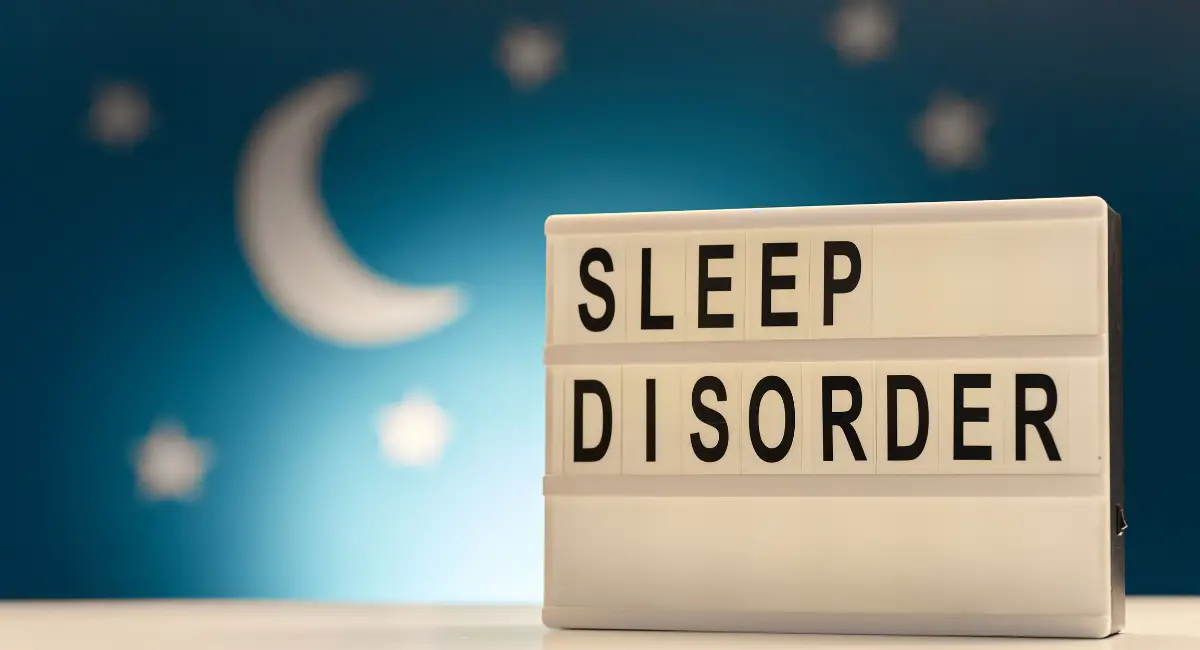
Sleep-Related Rhythmic Movement Disorder: Symptoms, Causes, and Therapy Options
Contents
- 1 Introduction
- 2 Symptoms of Sleep-Related Rhythmic Movement Disorder (RMD)
- 3 Causes and Risk Factors of Sleep-Related Rhythmic Movement Disorder (RMD)
- 4 Therapy and Treatment Options for Sleep-Related Rhythmic Movement Disorder (RMD)
- 5 Long-Term Management of Sleep-Related Rhythmic Movement Disorder (RMD)
- 6 Conclusion
- 7 References
Introduction
Sleep-Related Rhythmic Movement Disorder (RMD) is a condition characterized by repetitive, rhythmic movements of the head, trunk, or limbs during sleep, typically while falling asleep or during light sleep stages. The disorder is most common in infants and young children, but it can persist into adulthood in some cases. These movements can include head-banging, body-rocking, or leg-rolling, and they are often seen during non-REM sleep.
According to the International Classification of Sleep Disorders (ICSD-3), Sleep-Related Rhythmic Movement Disorder is diagnosed when these movements significantly interfere with sleep or cause harm (e.g., hitting the head against a surface). While many children grow out of RMD as they age, persistent cases can disrupt sleep and lead to daytime fatigue. This article will explore the Symptoms, Causes, and Therapy Options for Sleep-Related Rhythmic Movement Disorder in detail.
Symptoms of Sleep-Related Rhythmic Movement Disorder (RMD)
The primary symptoms of Sleep-Related Rhythmic Movement Disorder include repetitive, rhythmic body movements that occur during sleep. These movements can vary in intensity and frequency. Below is a table outlining the common symptoms and examples of how they manifest:
| Symptom | Description/Example |
|---|---|
| Repetitive Movements of the Head or Body | Individuals display rhythmic movements such as head-banging, body-rocking, or leg-rolling while falling asleep or during light sleep stages. |
| Occurring During Sleep Onset or Light Sleep | Movements typically occur just before or during the transition to sleep (non-REM stage 1 or 2), and can continue intermittently throughout the night. |
| Sleep Disruption | Although the movements are often unconscious, they can disrupt the individual’s sleep, leading to frequent awakenings and poor sleep quality. |
| Potential for Self-Injury | In severe cases, the rhythmic movements can result in injury, particularly if the individual is banging their head against a hard surface. |
| Common in Infants and Young Children | While the disorder is most common in young children, it can persist into adulthood, affecting sleep quality and leading to daytime fatigue. |
Causes and Risk Factors of Sleep-Related Rhythmic Movement Disorder (RMD)
The exact cause of Sleep-Related Rhythmic Movement Disorder is not well understood, but it is believed to be related to normal sleep development in infants and young children. For some individuals, RMD persists into adolescence or adulthood, where it can cause more significant sleep disturbances. Below are the most common causes and risk factors for RMD.
1. Developmental Factors
Sleep-Related Rhythmic Movement Disorder is thought to be part of normal neurological development in infants and young children. The disorder is more prevalent in children under five years old, and many outgrow it as their brain matures and they develop more stable sleep patterns.
- RMD is considered a developmental sleep disorder, meaning it is related to the immature brain’s regulation of sleep and movement. As the brain matures, these movements typically decrease or disappear.
- RMD is often observed in children who are otherwise healthy and developing normally, and in most cases, it resolves without intervention as the child grows older.
Emily, a 3-year-old child, exhibited rhythmic head-banging as she fell asleep each night. Her pediatrician reassured her parents that this behavior is common in young children and would likely resolve as Emily’s sleep patterns matured.
2. Genetic Predisposition
There is some evidence to suggest that RMD may have a genetic component, as the disorder can run in families. Children with a family history of RMD or other sleep-related movement disorders may be more likely to develop the condition.
- While no specific genes have been identified for RMD, the disorder may be more common in families with a history of sleep-related movement disorders or sleep disorders in general, such as Restless Legs Syndrome or Periodic Limb Movement Disorder.
- RMD often clusters in families, suggesting that genetic factors may play a role in susceptibility.
Tom, a 4-year-old with RMD, had an older sibling who experienced similar head-banging behaviors during sleep as a child. Both children had a family history of sleep-related movement disorders, pointing to a potential genetic predisposition.
3. Sleep Deprivation and Poor Sleep Hygiene
In some cases, Sleep-Related Rhythmic Movement Disorder can be exacerbated by sleep deprivation or poor sleep hygiene. When individuals are overtired or have irregular sleep patterns, their RMD symptoms may become more pronounced.
- Sleep deprivation and irregular sleep schedules can disrupt the normal regulation of sleep stages, increasing the likelihood of rhythmic movements during sleep onset or light sleep stages.
- RMD symptoms may become more frequent or severe when individuals are not getting enough sleep, as the body may struggle to transition smoothly between sleep stages.
Michael, a 6-year-old with RMD, experienced an increase in his head-banging behaviors after staying up late for several nights in a row. His parents worked with his doctor to establish a consistent bedtime routine, which helped reduce the frequency of his movements.
4. Coexisting Developmental Disorders
In some cases, Sleep-Related Rhythmic Movement Disorder is associated with other developmental or neurological disorders, such as autism spectrum disorder (ASD), intellectual disability, or attention-deficit hyperactivity disorder (ADHD).
- Children with developmental disorders such as ASD or intellectual disability may be more likely to exhibit RMD, as these conditions can affect the brain’s regulation of sleep and motor control.
- RMD may also be seen in children with ADHD, as the hyperactivity and restlessness associated with the disorder can carry over into sleep.
Sarah, diagnosed with autism spectrum disorder, displayed rhythmic body-rocking behaviors during sleep. Her pediatrician explained that RMD is more common in children with developmental disorders like hers.
Therapy and Treatment Options for Sleep-Related Rhythmic Movement Disorder (RMD)
Treatment for Sleep-Related Rhythmic Movement Disorder focuses on reducing the severity and frequency of the movements, improving sleep quality, and minimizing the risk of injury. Effective therapy options include Behavioral Therapy, Safety Measures, and Pharmacotherapy.
1. Behavioral Therapy
Behavioral therapy can be an effective treatment for RMD, particularly in children whose movements persist beyond the typical developmental stage. Cognitive Behavioral Therapy (CBT) and Habit Reversal Training are commonly used to help individuals manage their rhythmic movements.
- Cognitive Behavioral Therapy (CBT) helps individuals identify triggers for their rhythmic movements, such as stress or poor sleep hygiene, and teaches relaxation techniques to reduce the frequency of the movements.
- Habit Reversal Training focuses on replacing the rhythmic movements with alternative, less harmful behaviors. For example, children may be encouraged to engage in calming activities before bed to reduce the urge to engage in rhythmic movements during sleep.
John, an 8-year-old with persistent Repetitive Movement Disorder (RMD), attended Cognitive Behavioral Therapy (CBT) sessions to address his symptoms. During the sessions, he learned relaxation techniques to reduce his anxiety about sleep, which often triggered his head-banging behavior. His therapist also incorporated Habit Reversal Training (HRT), a behavioral approach designed to help John replace his head-banging with less harmful movements, like squeezing a soft object or tapping his fingers.
2. Safety Measures
For children with RMD, it is important to implement safety measures to prevent injury during episodes of head-banging or body-rocking. Creating a safe sleep environment can help reduce the risk of harm.
- Padding may be used on the headboard or bed frame to prevent injury during head-banging episodes. Soft, padded surfaces can reduce the impact of the movements and minimize the risk of harm.
- Mattress placement on the floor may be recommended for children who engage in body-rocking or other movements that could result in falling out of bed.
Sarah, diagnosed with Repetitive Movement Disorder (RMD), had her bed modified with padded cushions on the headboard to prevent injury from her frequent head-banging. This safety measure provided immediate protection, reducing the risk of harm during episodes. Meanwhile, her parents worked closely with her doctor to address the underlying sleep disorder contributing to her behavior
3. Pharmacotherapy
In more severe cases, medications may be prescribed to help manage the symptoms of Sleep-Related Rhythmic Movement Disorder. These medications are typically used when behavioral interventions and safety measures are not sufficient to control the disorder.
- Melatonin supplements may be prescribed to help regulate the sleep-wake cycle in children with RMD, especially those with irregular sleep patterns or coexisting developmental disorders.
- Clonazepam, a medication used to treat sleep disorders, may be prescribed in cases where the rhythmic movements are particularly disruptive or harmful. It works by reducing muscle activity during sleep, which can help decrease the frequency of the movements.
Michael, a child with severe Repetitive Movement Disorder (RMD), was prescribed melatonin supplements by his doctor to help regulate his sleep patterns, as his frequent head-banging episodes were often linked to sleep disturbances. The melatonin helped him fall asleep more easily and maintain a more consistent sleep schedule. In addition to the supplements, Michael also participated in behavioral therapy, which provided strategies to manage and reduce his head-banging behaviors.
Long-Term Management of Sleep-Related Rhythmic Movement Disorder (RMD)
Long-term management of Sleep-Related Rhythmic Movement Disorder involves ongoing behavioral strategies, safety precautions, and monitoring for improvement as the individual ages. Key strategies for long-term management include:
- Consistent Sleep Routine: Establishing a regular sleep schedule and maintaining good sleep hygiene can help reduce the frequency of rhythmic movements and improve sleep quality.
- Environmental Modifications: Ensuring that the sleep environment is safe, such as using padded surfaces or placing the mattress on the floor, helps prevent injury during episodes of RMD.
- Behavioral Therapy: For individuals with persistent RMD, ongoing Cognitive Behavioral Therapy (CBT) or Habit Reversal Training can help manage the symptoms and reduce the frequency of the movements.
Conclusion
Sleep-Related Rhythmic Movement Disorder (RMD) is a condition characterized by repetitive, rhythmic movements during sleep, often involving the head or body. The disorder is most common in infants and young children, and in many cases, it resolves as the child grows older. The causes of RMD include developmental factors, genetic predisposition, sleep deprivation, and coexisting developmental disorders. Treatment options such as Behavioral Therapy, Safety Measures, and Pharmacotherapy can significantly reduce the severity and frequency of the movements and improve sleep quality. Long-term management strategies, including a consistent sleep routine, environmental modifications, and ongoing behavioral therapy, are essential for preventing injury and maintaining good sleep hygiene.
References
- American Academy of Sleep Medicine. (2014). International Classification of Sleep Disorders (3rd ed.). American Academy of Sleep Medicine.
- American Psychiatric Association. (2013). Diagnostic and Statistical Manual of Mental Disorders (5th ed.). American Psychiatric Publishing.
- Klackenberg, G. (1971). Rhythmic movement disorder in childhood: Prevalence and development. Acta Paediatrica, 60(5), 607–610.
- Sheldon, S. H. (2014). Approach to the child with rhythmic movement disorder. Sleep Medicine Clinics, 9(2), 235–244.
- Horne, R. S. (2015). Sleep rhythmic movement disorder in infants and children. Sleep Medicine Reviews, 23, 32–39.
- Mindell, J. A., & Owens, J. A. (2015). A clinical guide to pediatric sleep: Diagnosis and management of sleep problems (3rd ed.). Wolters Kluwer.
- Sateia, M. J. (2014). International classification of sleep disorders—Third edition: Highlights and modifications. Chest, 146(5), 1387–1394.
- Jan, J. E., Freeman, R. D., & Wasdell, M. B. (2008). Rhythmic movement disorder in children: A review. Journal of Clinical Sleep Medicine, 4(1), 57–61.
- Kotagal, S., & Pianosi, P. (2006). Sleep disorders in children and adolescents. Chest, 129(6), 1384–1394.
- Ferber, R., & Kryger, M. H. (2017). Principles and practice of sleep medicine (6th ed.). Elsevier.
Explore Other Mental Health Issues








